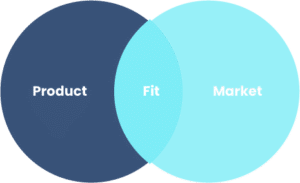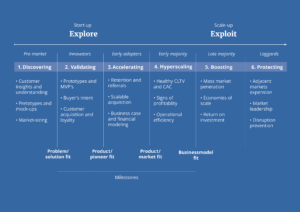In today’s competitive market, having a strong value proposition is crucial for the success of your business. A value proposition is a concise statement that communicates the unique benefits and value your product or service offers to your customers. It is a promise you make to your target audience, highlighting why they should choose your offering over others in the market. In this article, we will explore the 11 different value propositions and discuss how to choose the right one for your business.
What is a Value Proposition?
A value proposition is a clear and concise statement that communicates the unique benefits and value your product or service provides to customers. It answers the question, “Why should I choose your product or service?” By articulating the most valuable and distinguishing elements of your offering, you can attract and engage your target audience.
The Importance of a Strong Value Proposition
A strong value proposition is essential for several reasons:
- Differentiation: It helps differentiate your business from competitors in the market.
- Customer Engagement: It attracts and engages your target audience, increasing the likelihood of conversions.
- Clear Communication: It communicates the unique benefits and value of your offering in a concise and compelling manner.
- Competitive Advantage: It gives you an edge by highlighting what sets your product or service apart.
- Customer Retention: It helps in building customer loyalty and encourages repeat business.
The 11 Value Propositions
1. Newness
Newness involves creating new value propositions and constantly innovating. It focuses on offering something unique and fresh to the market. For example, Innovation Managers have the goal of innovating and are constantly seeking new technologies, methodologies, or products. They are held accountable if they fail to bring enough newness.
2. Performance
Performance value proposition revolves around improving the performance of products or services. It emphasizes speed, efficiency, or better functionality. Customers are attracted to offerings that can deliver superior results. For instance, a software company may highlight how their product increases productivity or streamlines operations.
3. Personalization
Personalization value proposition caters to customers’ desire to customize products or services to fit their specific needs. It offers tailored solutions and unique experiences. Companies like Nike provide customization options where customers can design their own shoes, appealing to those who want a personalized touch.
4. Getting The Job Done
Getting the job done focuses on helping customers perform specific tasks without much effort. The emphasis is on delivering the desired outcome efficiently. Companies like Rolls Royce sell peace of mind by taking care of aircraft engine monitoring and maintenance for their customers.
5. Design
Design value proposition emphasizes the aesthetics and visual appeal of a product or service. It targets customers who appreciate well-designed and visually pleasing offerings. Brands like Bang & Olufsen are known for their elegant and stylish designs, attracting customers who value aesthetics.
6. Brand/Status
Brand/status value proposition contributes to how customers want to be perceived by others. It aligns with customers’ aspirations and values, allowing them to express their identity through the products or services they choose. Companies focusing on sustainability, for example, appeal to customers who want their choices to reflect their environmental consciousness. Or wearing luxury brands like Rolex or driving prestigious cars like Mercedes symbolizes wealth, because customers often feel the need to wear popular brands to be considered cool or successful.
7. Price
Price value proposition revolves around offering products or services at a lower price compared to alternatives in the market. It attracts price-sensitive customers who are looking for cost-effective solutions. Companies like discount retailers or budget airlines excel in this value proposition.
8. Cost Reduction
Cost reduction value proposition focuses on lowering costs for the customer. It goes beyond price and targets the overall cost-effectiveness of the offering. For example, a medical equipment manufacturer may develop products that reduce operational costs for healthcare providers.
9. Risk Reduction
Risk reduction value proposition aims to mitigate risks and increase certainty for customers. It addresses potential concerns or uncertainties associated with using a product or service. Insurance companies, for instance, develop apps that discourage phone use while driving, reducing the risk of accidents.
10. Accessibility
Accessibility value proposition provides products or services to customers who previously lacked access. It opens doors and creates opportunities. Online platforms like AliExpress enable customers to access a wide range of products and services conveniently.
11. Convenience/Usability
Convenience/usability value proposition focuses on making products or services easier to use. It addresses the pain points associated with complexity and offers intuitive and seamless experiences. Apple’s iPhone revolutionized the smartphone industry with its user-friendly interface.
Choosing the Right Value Proposition
While you may find multiple value propositions relevant to your end user, it is essential to identify the most important one for your business. Pay close attention to customer conversations and feedback to determine which value proposition resonates the most. By focusing on a single value proposition, you can streamline your messaging and increase your chances of success.
Different Value Propositions in the DMU
Within the Decision Making Unit (DMU), there are often multiple roles and individuals involved in the purchasing decision. Each role within the DMU has its own interests and priorities that they consider when evaluating a product or service.
In some cases, customer conversations may reveal differing value propositions within the DMU. For example, the end user may prioritize performance improvement, while the decision maker emphasizes cost reduction. In such situations, it is important to validate and address both value propositions to increase the chances of success.
To validate multiple value propositions within the DMU, it is essential to engage in targeted conversations with each stakeholder and understand their specific needs and priorities. Tailor your messaging and value proposition to address the concerns and interests of each role. Highlight the benefits that resonate with each stakeholder, emphasizing both performance improvement and cost reduction.
FAQs
Q1: Can I have multiple value propositions for different customer segments?
Yes, it is possible to have different value propositions for different customer segments. By understanding the specific needs and preferences of each segment, you can tailor your messaging accordingly.
Q2: How do I validate my chosen value proposition?
Validating your chosen value proposition involves gathering feedback from your target audience, conducting market research, and analyzing customer behavior and preferences. This data will help you assess the effectiveness of your value proposition.
Q3: Can I change my value proposition over time?
Yes, your value proposition may evolve as your business grows and market conditions change. It is important to regularly evaluate and adapt your value proposition to stay relevant and competitive.
Q4: Should my value proposition align with my brand identity?
Yes, your value proposition should align with your brand identity and core values. It should reflect what your brand stands for and the unique benefits you offer to customers.
Q5: How can I effectively communicate my value proposition?
To effectively communicate your value proposition, use clear and concise language, highlight the unique benefits, and focus on addressing customer needs and pain points. Use various messaging strategies to reach your target audience effectively.
Conclusion
Crafting a compelling value proposition is vital for the success of your business. By understanding the different value propositions available and choosing the one that aligns with your target audience’s needs, you can effectively communicate the unique benefits of your product or service. Remember to regularly evaluate and refine your value proposition based on customer feedback and market dynamics.



